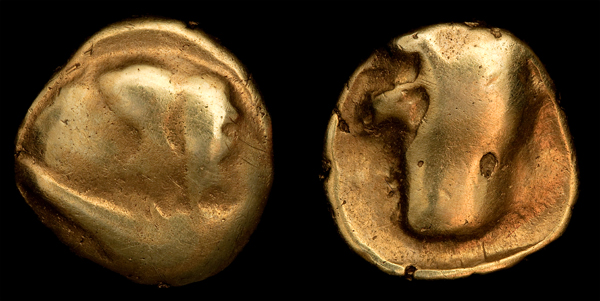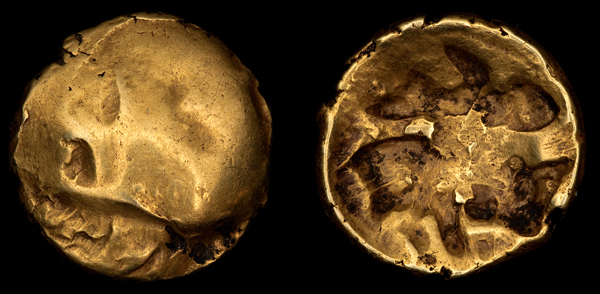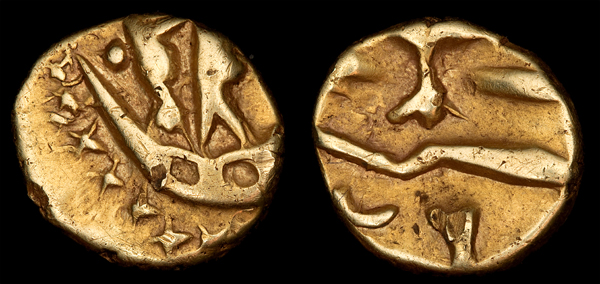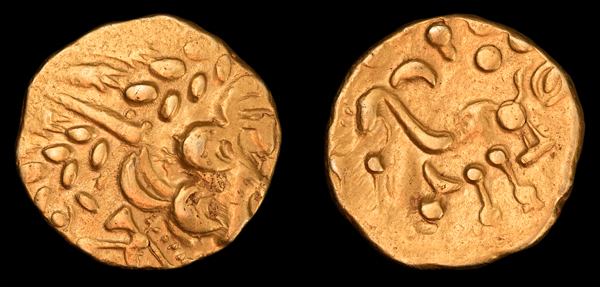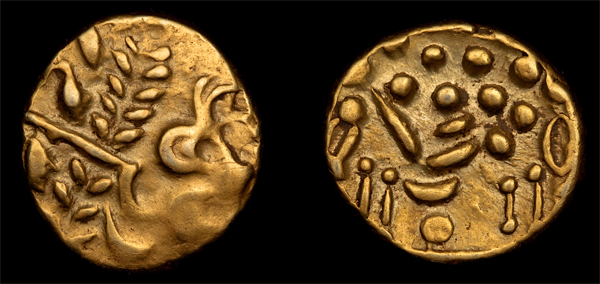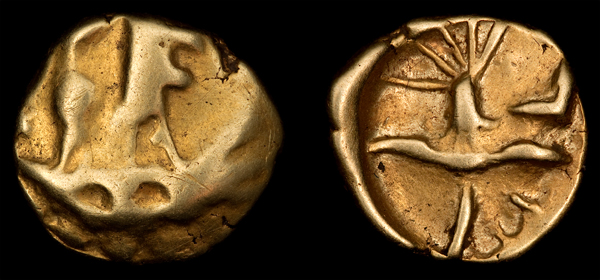The Cheriton Wheel stater was small local issue in the Hampshire region. This territory is assigned to the Belgae, so it is attributed to them, but as they were a confederation of immigrants from northen Gaul, it is most likely that it was minted by an unknown tribe within the confederation. It is one of the larger local issues from this region, so was probably minted by one of the larger members. The reverse of the coin is derived from British Qa or Qd, which places them just after the end of the Gallic War.
The obverse is influenced by the Gallo-Belgic F stater which was minted by the Suessiones during the Gallic wars. This is known as an “Eye Stater” because of the large eye on the obverse (which is unfortunately off-flan on this coin). One of the two known Eye Star quarter staters (see 90), which were influenced by the Bellovaci’s Eye staters, was found in this area (and the other not far away), so perhaps they are the companions to this stater, despite their slightly different sources.
This coin has a hole through it and a surrounding flat area. The hole appears to be natural, but is conviniently placed so that the horse sits the right way up when suspended from a cord. There is a small amount of smoothing around the inside edges of the hole which suggests that it might have been, but it’s not an excessive amount, and no where near the levels seen on the coin surfaces.
The smooth areas on the coin’s surfaces are hard to explain. It’s unlikely that the wear was caused by being worn as a pendant, because the wear on the coin surfaces far exceeds the wear inside the hole. The wear should also be symetrical around the hole if it was caused by the cord rubbing, but it mainly forms to one side of the hole when suspended vertically. The coin isn’t flat so we’d also expect to see the wear cut into the surfaces more at the edges.
It’s possible that the coin was used as a touch piece, with the owner constantly gripping the portion with the hole. It does fit nicely between the thumb and forefinger (like a guitar plectrum), but I’d expect to see much more wear on the rest of the coin if this was the cause. The rest of the coin doesn’t look like it was handled excessively.
The smooth areas aren’t tong marks because the coin is curved, and tongs would have flattened it as well as smoothed it. The flan is thinner than the rest of the coin here (1.86mm vs 2.44mm), so it’s likely that the smooth areas were caused by the image not being transferred from the dies to this thinner portion when it was struck.
